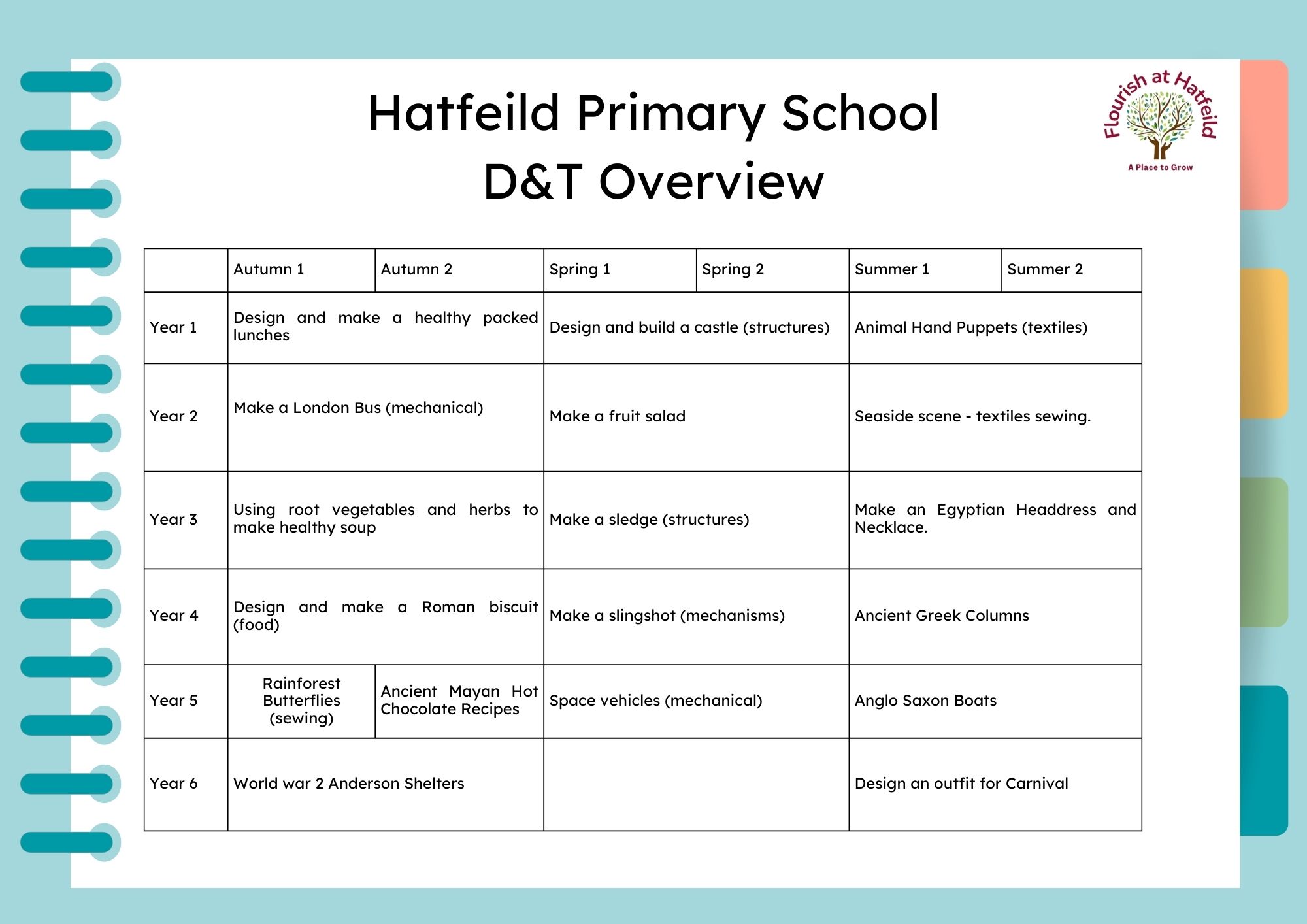Design and Technology
Intent
At Hatfeild Primary School we aim to create a firm foundation for a lifetime love of learning by appreciating the design and creativity displayed by the best creators and designers and to use a variety of high-quality resources to create products with an aesthetic and practical purpose.
The DT curriculum at Hatfeild enables children to develop their creative and innovative skills as they do meaningful and purposeful projects in a real-life context. We aim for our children to become confident designers, who can solve real life problems using creativity and imagination. As their skills progress, the children tackle challenging but achievable projects that enable them to use cross-curricular knowledge. We aim to, wherever possible, link work to other disciplines such as mathematics, science, computing and art. Teachers endeavour to bring learning to life during activities such as cooking, mechanics, construction and textiles. The lessons are relevant, practical and engaging.
Implementation
To ensure high standards of teaching and learning in Design and Technology, we implement a curriculum that is progressive throughout the whole school. Design and Technology is taught half-termly or termly focusing on knowledge and skills stated in the National Curriculum and using the EYFS framework. It is woven through many other subjects, including Mathematics, Science and Art and Design.
We recognise the importance of researching a range of existing products and learning about their designers. This raises pupils' curiosity and engagement in learning, and it is a crucial part of understanding the impact of design on the world as well. We provide our pupils with a variety of resources so they can be independent and original in their design choices. We encourage children to reflect and make adjustments to their designs and appreciate the process of designing rather than just the final product. Children are also encouraged to think about sustainability issues in order to understand the impact that the design and technology business has on the world.
During DT lessons, we focus on real-life skills such as solving problems, creativity, teamwork and independence at each stage of our project. Children will get the chance to focus on the following key areas:
Research: Pupils will research previous products and their creators to see how the design works and how the design can be replicated.
Design: They will design a product by making informed decisions and recording and adapting ideas where necessary.
Make: The pupils will make a functional product based on their design, test it and ensure that it works.
Evaluate: They will reflect on their product and consider it against the success criteria. They are encouraged to think carefully about the product's strengths and improvements they could make.
Technical Knowledge: They develop the technical and practical expertise needed to create innovative prototypes and products. In the designing and making phase, children explore and use a variety of different skills in their products. They learn how to build structures, exploring how they can be made stronger and more stable. The children investigate and use mechanisms and (where appropriate) electronics in their products. They select appropriate materials and joining techniques e.g., sewing and weaving.
Cooking and Nutrition: Children learn how to engage with cooking, preparation of dishes, nutrition and varied diets. They also learn about the relationship between good nutrition and mental and physical wellbeing.
Impact
The key NC strands in Design and Technology, the EYFS framework and Development Matters have informed our curriculum planning, leading to a direct impact on children's learning.
By the end of their time at Hatfeild, our aim is for children to have both an appreciation for design and an understanding of the technical skills required to produce different products. We want children to be able to solve problems and adapt designs to suit different specifications by reflecting on products and being able to consider what works well and what improvements could be made. In food technology, it is also important that children understand the importance of a healthy, balanced diet.

